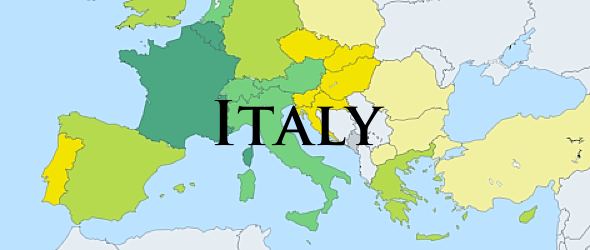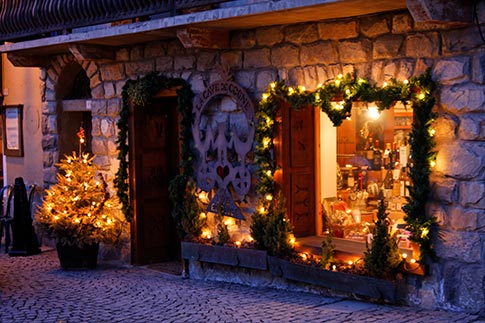The Florence Cathedral, also known as the Cathedral of Santa Maria del Fiore, is a magnificent architectural marvel that offers a captivating insight into the rich history and artistic heritage of Florence, Italy. This iconic cathedral stands as a testament to the city’s cultural and historical significance, attracting visitors from around the world.
The history of the Florence Cathedral is a fascinating tale of architectural ambition and innovation. The construction of the cathedral began in 1296 and took over 140 years to complete. It showcases the remarkable skills of numerous renowned architects, including Arnolfo di Cambio and Filippo Brunelleschi, who contributed to its unique design and structural beauty.
The Florence Cathedral holds immense significance in the Renaissance period, serving as a symbol of Florence’s economic and political power during that time. It became the center of religious and cultural activities, attracting renowned artists, philosophers, and thinkers of the era. The cathedral played a crucial role in shaping the artistic and intellectual development of the city and the region as a whole.
The architectural features of the Florence Cathedral are awe-inspiring, blending Gothic influences with innovative design elements. The cathedral’s façade showcases intricate details and beautiful sculptures, while the towering bell tower provides a panoramic view of the city. However, the most iconic feature of the cathedral is its massive dome, designed by Brunelleschi, which remains a marvel of engineering and craftsmanship.
Inside the cathedral, visitors can admire a vast collection of artworks and decorations that span centuries. Famous paintings and sculptures adorn the interior, showcasing the artistic prowess of renowned masters. The cathedral is also home to significant religious artifacts, including the exquisite Baptistry and Andrea Pisano and Lorenzo Ghiberti’s renowned Gates of Paradise.
Over the years, the Florence Cathedral has witnessed notable events and welcomed distinguished visitors. It has hosted papal conclaves and visits, as well as royal coronations and weddings, adding to its historical significance and allure.
Today, the Florence Cathedral stands as a beloved tourist destination, welcoming visitors who marvel at its grandeur and historical importance. It is open to the public, allowing individuals to explore its magnificent interior and discover the stories and secrets hidden within its walls. Guided tours and tourist information are available to enhance the visitor experience, ensuring a deeper understanding of the cathedral’s cultural and artistic significance.
A visit to the Florence Cathedral is an immersive journey into history, art, and architecture – an experience that will leave visitors in awe of its grandeur and forever appreciative of its cultural value.
History of the Florence Cathedral
Step into a time machine as we uncover the captivating history of the Florence Cathedral. From the intricate construction techniques that brought this architectural marvel to life, to its pivotal role in the Renaissance period, we’ll explore the compelling stories that shaped the Florence Cathedral. Get ready to unravel the secrets behind its creation and discover why it remains a symbol of artistic brilliance and cultural significance till this day.
Construction of the Cathedral
The construction of the Florence Cathedral, also known as the Duomo, was an awe-inspiring undertaking that unfolded over the course of many centuries. Its inception dates back to 1296, and its final completion came to fruition in 1436. The Cathedral owes its fame to the remarkable architectural masterpiece: the dome, ingeniously crafted by Filippo Brunelleschi. Realizing the dome necessitated the implementation of groundbreaking construction methods. Additionally, the magnificent Cathedral boasts a striking facade and a bell tower that add to its allure. Undoubtedly, the construction of this Cathedral holds immense historical significance for Florence and played an instrumental role in the evolution of Renaissance architecture.
Significance of the Florence Cathedral in the Renaissance Period
During the Renaissance period, the Florence Cathedral played a significant role in shaping the artistic and cultural landscape of Florence and Italy as a whole.
- The Florence Cathedral, with its magnificent Gothic design, became a symbol of Florence’s wealth, power, and artistic prowess during the Renaissance.
- The cathedral was a center for artistic innovation, attracting renowned artists such as Brunelleschi and Ghiberti to create masterpieces within its walls.
- The Florence Cathedral’s grandeur and architectural achievements inspired artists to incorporate classical elements and mathematical precision in their works, sparking the Renaissance movement.
- Through its art, architecture, and religious symbolism, the Florence Cathedral reflected the significance of the Renaissance, emphasizing humanism and the importance of individual expression.
- The success and impact of the Florence Cathedral inspired the construction and transformation of other cathedrals across Italy and Europe during the Renaissance.
Architectural Features of the Florence Cathedral
Unveiling the majestic Florence Cathedral, we embark on a journey through its architectural wonders. From the Gothic influences that permeate its design to the awe-inspiring Dome, Bell Tower, and Facade, each sub-section offers a glimpse into the incredible craftsmanship and ingenuity that defined this iconic structure. So, prepare to be enchanted as we explore the architectural features of the Florence Cathedral, where history and art converge to create a timeless masterpiece.
Gothic Influences in the Design
| Flying Buttresses | These external supports helped distribute the weight of the walls, allowing for taller and more intricate designs. |
| Pointed Arches | The use of pointed arches in the windows and doorways created a sense of height and elegance. |
| Ribbed Vaulting | The introduction of ribbed vaulting in the ceiling added strength and allowed for larger open spaces. |
| Ornate Decoration | Gothic architecture is characterized by intricate detailing, such as decorative carvings and stained glass windows. |
The Dome of the Cathedral
The Dome of the Florence Cathedral, also known as the Dome of the Cathedral, is a remarkable architectural feature that has held significant importance throughout history. It is a masterpiece of engineering and design, showcasing the brilliance of Filippo Brunelleschi. Constructed in the 15th century, the Dome of the Cathedral stands as a symbol of the Renaissance and the architectural achievements of that era. It is the largest brick dome ever constructed and is known for its innovative double-shell structure. The Dome of the Cathedral‘s construction and design continue to amaze visitors today, attracting history enthusiasts and architectural marvel seekers alike.
Bell Tower and Facade
The Bell Tower and Facade are central architectural features of the Florence Cathedral, enhancing its grandeur and beauty. Let’s delve into some details regarding these elements:
- Bell Tower: Giotto’s Campanile, otherwise known as the Bell Tower, stands next to the cathedral as a separate and independent structure. Created by the talented Giotto di Bondone, it is acclaimed for its elaborate Gothic design.
- Facade: Adorned with exquisite marble panels, statues, and intricate embellishments, the cathedral’s façade is a true masterpiece of Renaissance art. It showcases the remarkable skill and craftsmanship of the era.
Together, the Bell Tower and Facade contribute to the overall magnificence of the Florence Cathedral, making it an essential destination for architecture and art enthusiasts.
Art and Decorations Inside the Florence Cathedral
Step inside the magnificent Florence Cathedral and prepare to be mesmerized by the art and decorations that adorn its interiors. From famous artworks and sculptures to the intricate beauty of the Baptistry and Ghiberti’s Gates of Paradise, every corner tells a story of artistic excellence. Descend into the crypt to witness the grandeur of the funerary monuments. With such captivating elements, exploring the art and decorations inside the Florence Cathedral is a journey through history and creativity that cannot be missed.
Famous Artworks and Sculptures
Within the Florence Cathedral, visitors can admire a variety of famous artworks and sculptures. These masterpieces showcase the artistic talent of renowned artists and sculptors throughout history.
| Artwork/Sculpture | Artist/Sculptor | Year |
| The Last Judgment | Giorgio Vasari | 1572 |
| The Creation of Adam | Michele Tosini | 1572 |
| La Pieta | Baccio Bandinelli | 1555 |
| The Penitent Magdalene | Donatello | 1453 |
| The Deposition | Michelangelo Buonarroti | 1550 |

Stop reading, start speaking
Stop translating in your head and start speaking Italian for real with the only audio course that prompt you to speak.
These remarkable famous artworks and sculptures add beauty and cultural significance to the Florence Cathedral, attracting art enthusiasts from around the world.
The Baptistry and Ghiberti’s Gates of Paradise
The Baptistry and Ghiberti’s Gates of Paradise are two remarkable features of the Florence Cathedral that are worth exploring.
- The Baptistry is one of the oldest buildings in Florence and is known for its beautiful bronze doors.
- Ghiberti’s Gates of Paradise, located in the Baptistry, is a set of gilded bronze doors that depict scenes from the Old Testament.
- These doors, known as Ghiberti’s crowning achievement, showcase the artistry of the Renaissance.
- The level of detail and intricate craftsmanship on the Baptistry’s doors is truly awe-inspiring.
- They have been admired by artists and scholars for centuries and continue to be a major attraction for visitors today.
The Crypt and Funerary Monuments
At the Florence Cathedral, The Crypt and Funerary Monuments hold historical and cultural significance.
- Tombs of the Medici Family: The crypt houses the tombs of famous members of the Medici family, such as Cosimo de’ Medici and Lorenzo de’ Medici.
- Sarcophagi and Effigies: The area contains intricate sarcophagi and effigies of notable figures, including bishops and archbishops.
- Frescoes and Mosaics: The crypt is adorned with beautiful frescoes and mosaics that depict religious scenes and saints.
Visitors can explore The Crypt and Funerary Monuments and learn about the history of these important individuals. Suggestions for exploring include taking a guided tour to gain deeper insight into the symbolism and artistry present.
Notable Events and Visitors at the Florence Cathedral
Step into the rich tapestry of history as we explore the Florence Cathedral, a magnificent architectural wonder. In this section, we will uncover the notable events and visitors that have graced this iconic landmark. From papal conclaves and papal visits to grand coronations and royal weddings, the Florence Cathedral holds a wealth of stories waiting to be discovered. Prepare to be enchanted by the remarkable events that have unfolded within these hallowed walls.
Papal Conclaves and Papal Visits
Papal Conclaves and Papal Visits have been integral to the history of the Florence Cathedral. Throughout the years, significant Papal Conclaves and Papal Visits have taken place within its walls. Noteworthy among these occasions are the election of Pope Eugenius IV in 1431 and the visit of Pope Leo X in 1515. These events brought immense prestige and attention to the cathedral, firmly establishing its significance in both religious and political realms. Additionally, the cathedral served as a grand setting for papal coronations, including the memorable coronation of Pope Clement VII in 1523. Today, visitors can delve into the cathedral’s glorious past and its deep connections to the papacy through captivating guided tours and informative educational displays.
Coronations and Royal Weddings
Coronations and royal weddings have been significant events throughout history at the Florence Cathedral. Many notable coronations have taken place, including Emperor Charles V’s Coronation in 1530 and Grand Duke Cosimo III de’ Medici’s Coronation in 1670. Royal weddings have also been celebrated, such as the Wedding of Ferdinando II de’ Medici and Vittoria della Rovere in 1637. These events showcased the power and prestige of the Medici family and solidified their position as rulers of Florence. The Florence Cathedral’s grandeur and symbolism provided the perfect backdrop for these important coronations and royal weddings.
| Event | Date | Details |
| Emperor Charles V’s Coronation | 1530 | Symbolized the close alliance between the Holy Roman Empire and the Medici family. |
| Grand Duke Cosimo III de’ Medici’s Coronation | 1670 | Emphasized the Medici family’s authority and influence in Florence. |
| Wedding of Ferdinando II de’ Medici and Vittoria della Rovere | 1637 | Celebrated the union of two powerful noble families and strengthened their political alliances. |
Visiting the Florence Cathedral Today
Unravel the secrets of the Florence Cathedral as we embark on a journey through time. Step into the present as we explore what it means to visit this magnificent landmark today. Discover the practical details you need to know, from opening hours and ticketing to the wealth of knowledge available through guided tours and tourist information. Get ready to immerse yourself in the grandeur and rich history of this iconic cathedral.
Opening Hours and Tickets
To plan your visit to the Florence Cathedral, it’s crucial to have information about the opening hours and ticket options. Here is everything you need to know:
- Opening Hours: The Florence Cathedral welcomes visitors during the specified opening hours.
- Ticket Options: There are various ticket options available, including general admission tickets, combined tickets for multiple attractions, and guided tour tickets.
- Purchasing Tickets: You have the choice to buy tickets in advance online or at the entrance. It is recommended to book in advance during peak tourist seasons to avoid lengthy queues.
- Cost: Ticket prices may vary depending on the type of ticket and the visitor’s age. Discounts may be available for children, students, and seniors.
- Additional Information: It is important to note that certain areas within the cathedral may require separate tickets or have restricted access. The cathedral authorities may also have specific guidelines concerning dress code and photography.
Guided Tours and Tourist Information
When visiting the Florence Cathedral, taking guided tours can greatly enhance your experience and understanding of this historic landmark. Guided tours provide informative commentary about the cathedral’s architectural features, famous artworks, and notable events. They also offer insight into the history and significance of the cathedral in the Renaissance period. Tourist information is readily available, providing details on opening hours, ticket prices, and other practical information for visitors. By participating in guided tours and seeking out tourist information, you can delve deeper into the fascinating history of the Florence Cathedral and make the most of your visit.
Frequently Asked Questions
What is the significance of the Florence Cathedral?
The Florence Cathedral, also known as Santa Maria Del Fiore or the Duomo of Florence, is an iconic architectural landmark in Florence that symbolizes the city’s rich and complex history, cultural significance, and artistic genius of the Renaissance. It serves as a testament to human achievement and stands as one of the largest churches in the world.
Who designed the iconic dome of the Florence Cathedral?
Filippo Brunelleschi, an architect of great renown, designed the iconic dome of the Florence Cathedral. His architectural ambition and ingenuity led to the creation of the stunning red tiled dome, known as Brunelleschi’s Dome, that stands as a dramatic focal point of the cathedral.
What materials were used in the construction of the Florence Cathedral?
The construction of the Florence Cathedral involved the use of various materials. The facade of the cathedral is adorned with luxurious pink and white marble panels, while the dome itself is made of red tiles. The interior features intricate frescoes, sculptures, and stained glass windows, adding to the grandeur of the cathedral.
How did Brunelleschi’s dome influence future architectural wonders?
Brunelleschi’s dome, with its innovative double-shell design, not only resolved the architectural challenge of constructing such a large dome but also became a landmark achievement in Renaissance architecture. Its architectural prowess and use of linear perspective served as an inspiration for future architectural projects and shaped the trajectory of Renaissance art and design.
What is the historical significance of the Florence Cathedral?
The Florence Cathedral holds immense historical significance for the city of Florence. It replaced the old church of San Reparata in the 13th century and became a symbol of the city’s financial success, wool and banking industries, and emergence as a major cultural and artistic center. It played a vital role in the spiritual life of Florence and continues to be an important religious institution today.
Where is the Florence Cathedral located and how to get there?
The Florence Cathedral, situated in the Tuscan capital of Florence, is centrally located in the city’s urban fabric. It can be easily accessed by various means of transportation. The nearest train station to the cathedral is Santa Maria Novella, and from there, it is a short walk to the Piazza del Duomo where the cathedral is located. Visitors can also enjoy a scenic walk along the Arno River or use public transportation to reach the cathedral.
{
“@context”: “https://schema.org”,
“@type”: “FAQPage”,
“mainEntity”: [{
“@type”: “Question”,
“name”: “What is the significance of the Florence Cathedral?”,
“acceptedAnswer”: {
“@type”: “Answer”,
“text”: “The Florence Cathedral, also known as Santa Maria Del Fiore or the Duomo of Florence, is an iconic architectural landmark in Florence that symbolizes the city’s rich and complex history, cultural significance, and artistic genius of the Renaissance. It serves as a testament to human achievement and stands as one of the largest churches in the world.”
}
},{
“@type”: “Question”,
“name”: “Who designed the iconic dome of the Florence Cathedral?”,
“acceptedAnswer”: {
“@type”: “Answer”,
“text”: “Filippo Brunelleschi, an architect of great renown, designed the iconic dome of the Florence Cathedral. His architectural ambition and ingenuity led to the creation of the stunning red tiled dome, known as Brunelleschi’s Dome, that stands as a dramatic focal point of the cathedral.”
}
},{
“@type”: “Question”,
“name”: “What materials were used in the construction of the Florence Cathedral?”,
“acceptedAnswer”: {
“@type”: “Answer”,
“text”: “The construction of the Florence Cathedral involved the use of various materials. The facade of the cathedral is adorned with luxurious pink and white marble panels, while the dome itself is made of red tiles. The interior features intricate frescoes, sculptures, and stained glass windows, adding to the grandeur of the cathedral.”
}
},{
“@type”: “Question”,
“name”: “How did Brunelleschi’s dome influence future architectural wonders?”,
“acceptedAnswer”: {
“@type”: “Answer”,
“text”: “Brunelleschi’s dome, with its innovative double-shell design, not only resolved the architectural challenge of constructing such a large dome but also became a landmark achievement in Renaissance architecture. Its architectural prowess and use of linear perspective served as an inspiration for future architectural projects and shaped the trajectory of Renaissance art and design.”
}
},{
“@type”: “Question”,
“name”: “What is the historical significance of the Florence Cathedral?”,
“acceptedAnswer”: {
“@type”: “Answer”,
“text”: “The Florence Cathedral holds immense historical significance for the city of Florence. It replaced the old church of San Reparata in the 13th century and became a symbol of the city’s financial success, wool and banking industries, and emergence as a major cultural and artistic center. It played a vital role in the spiritual life of Florence and continues to be an important religious institution today.”
}
},{
“@type”: “Question”,
“name”: “Where is the Florence Cathedral located and how to get there?”,
“acceptedAnswer”: {
“@type”: “Answer”,
“text”: “The Florence Cathedral, situated in the Tuscan capital of Florence, is centrally located in the city’s urban fabric. It can be easily accessed by various means of transportation. The nearest train station to the cathedral is Santa Maria Novella, and from there, it is a short walk to the Piazza del Duomo where the cathedral is located. Visitors can also enjoy a scenic walk along the Arno River or use public transportation to reach the cathedral.”
}
}]
}



